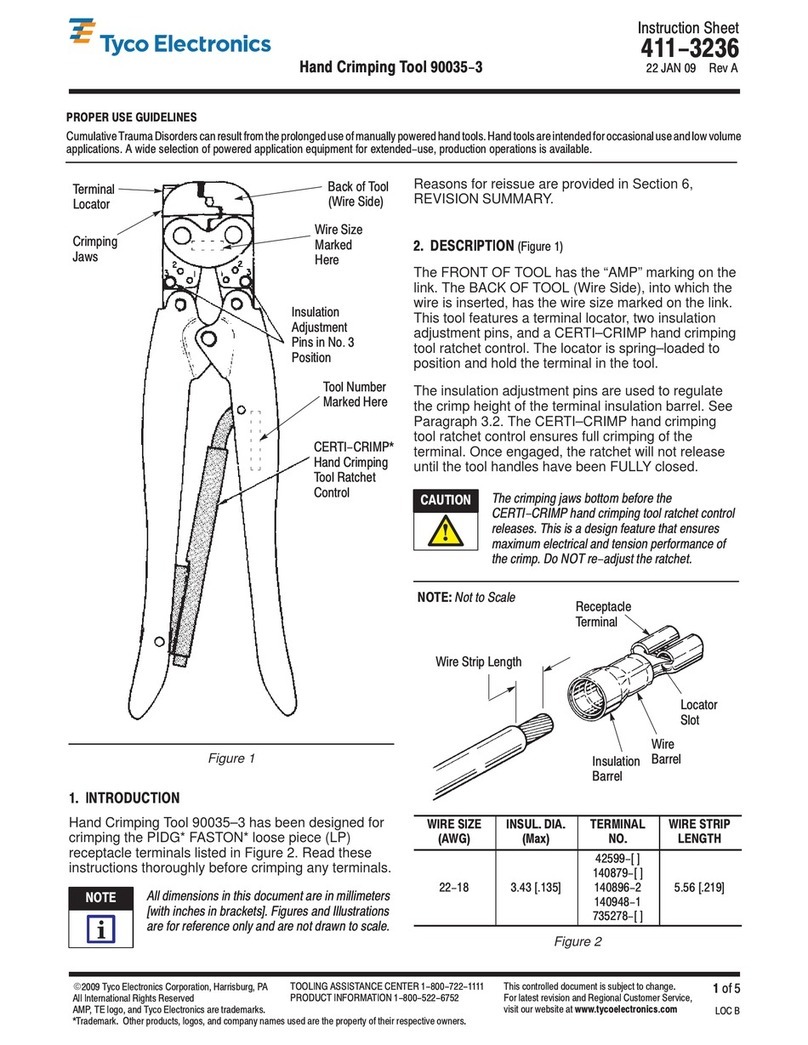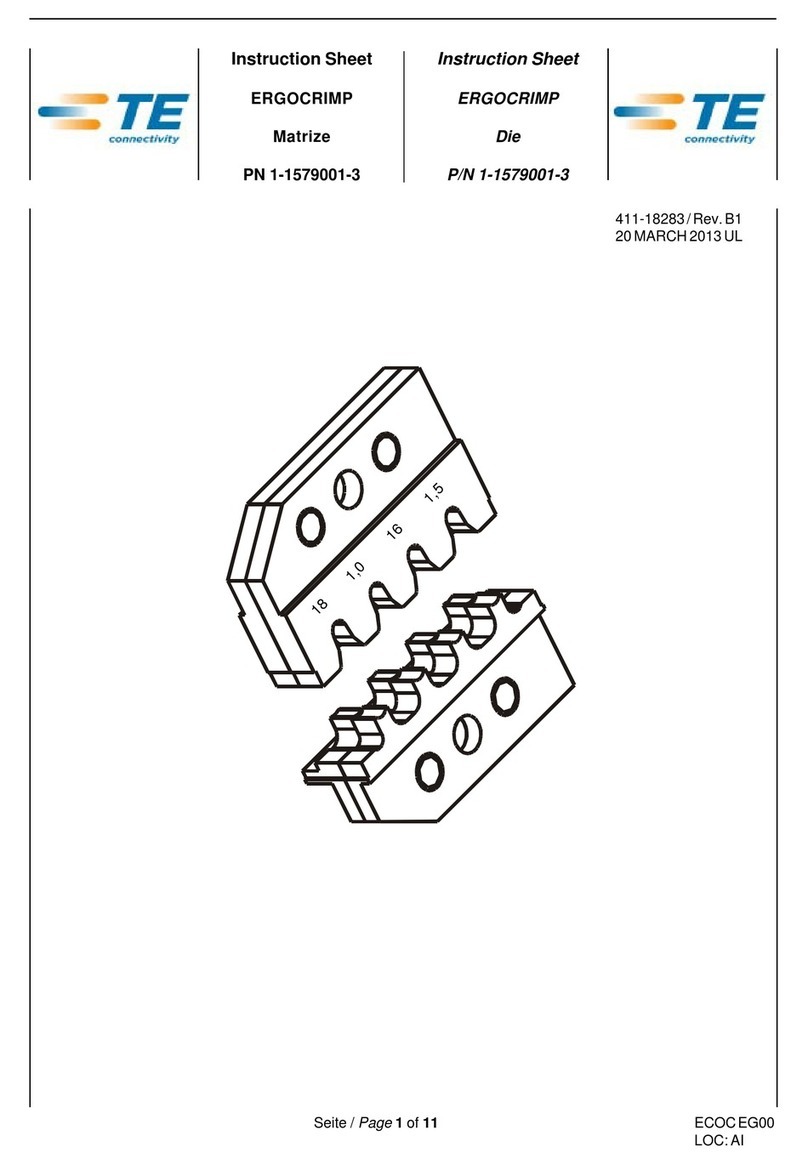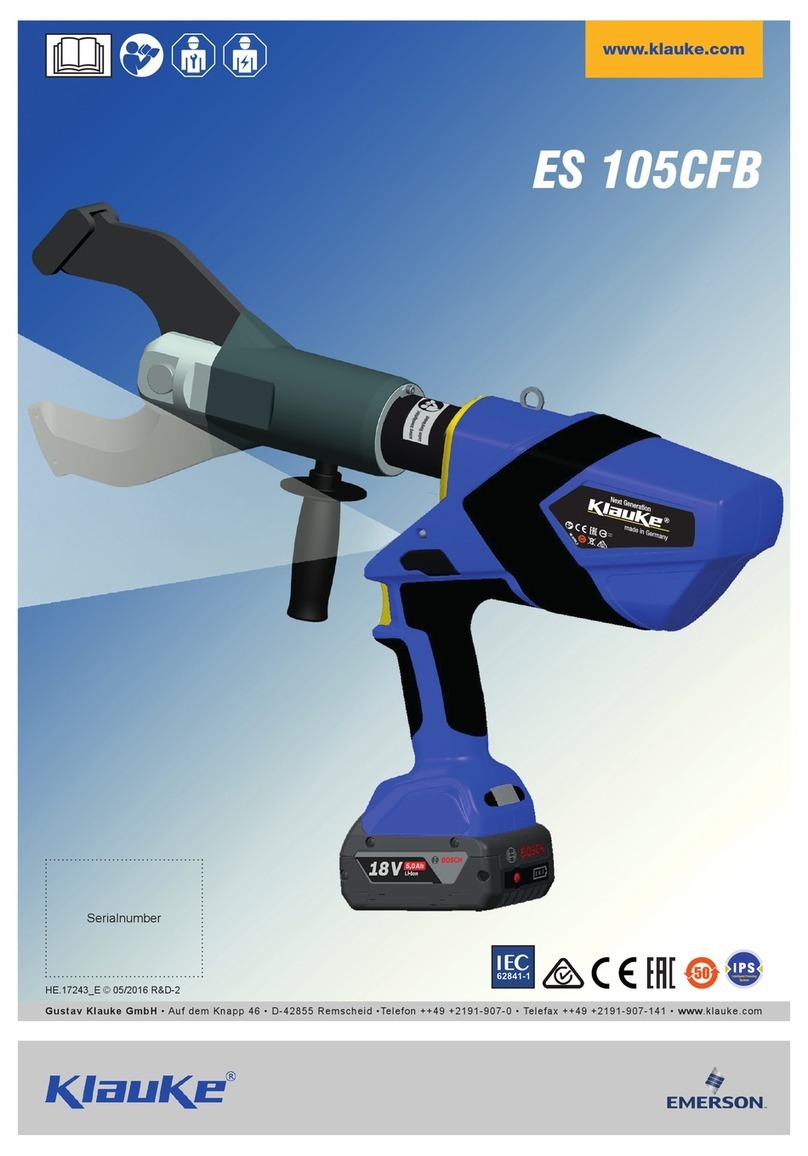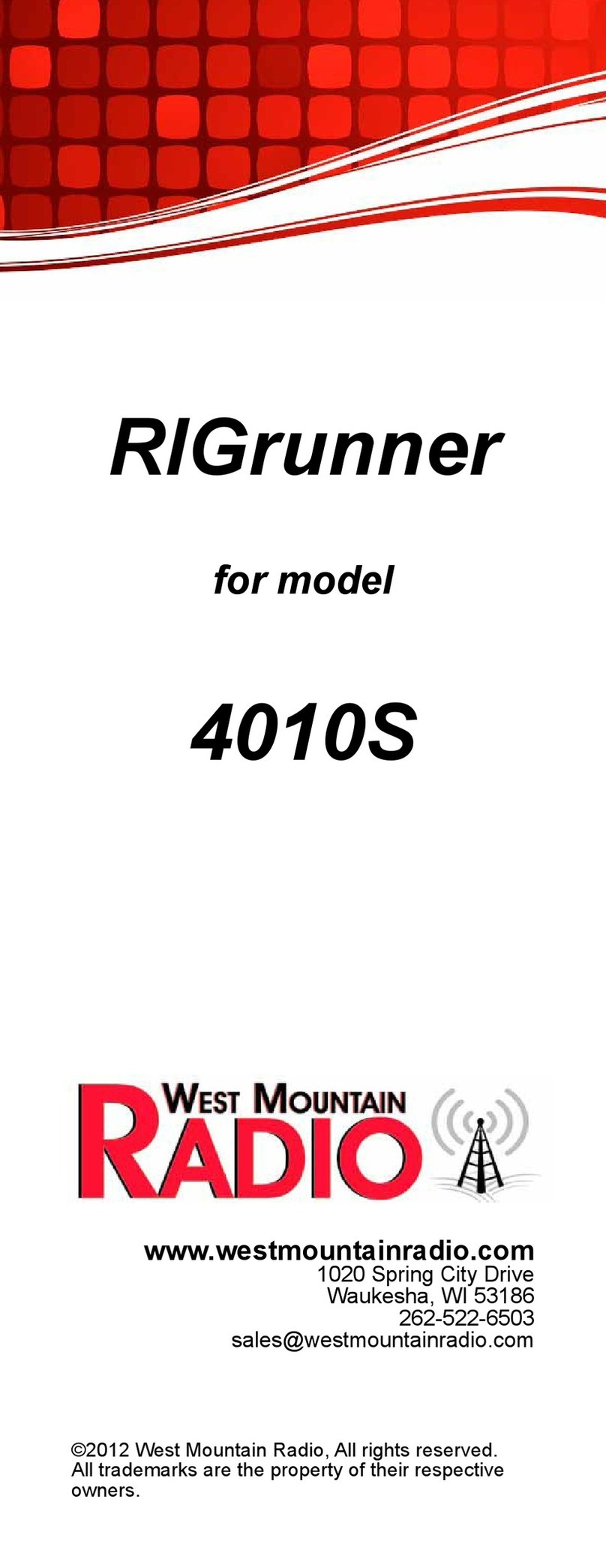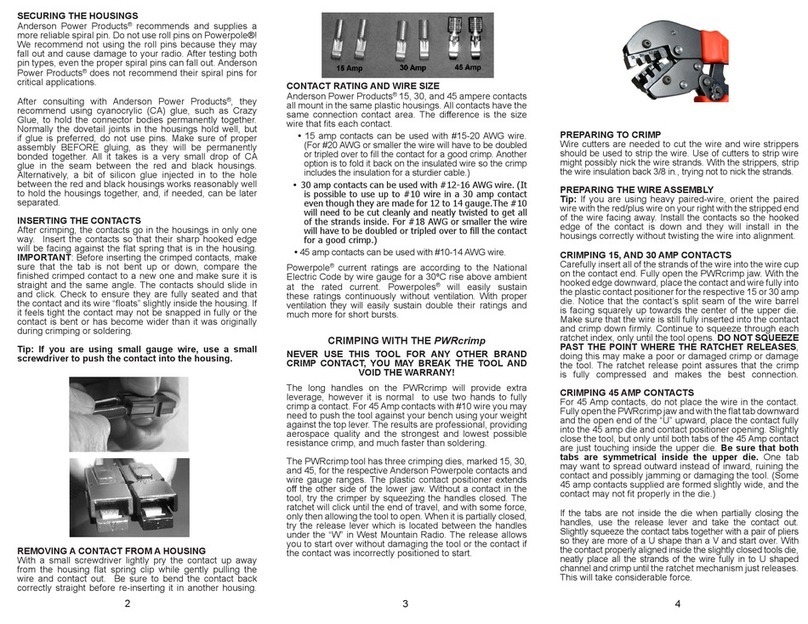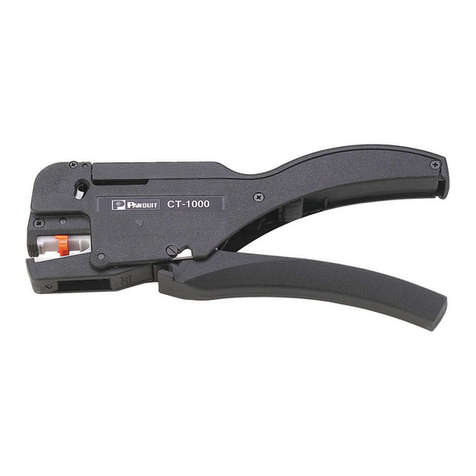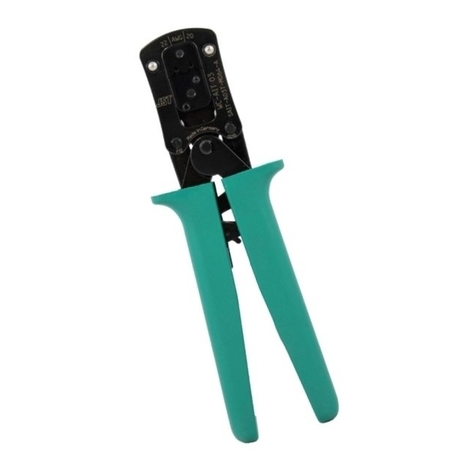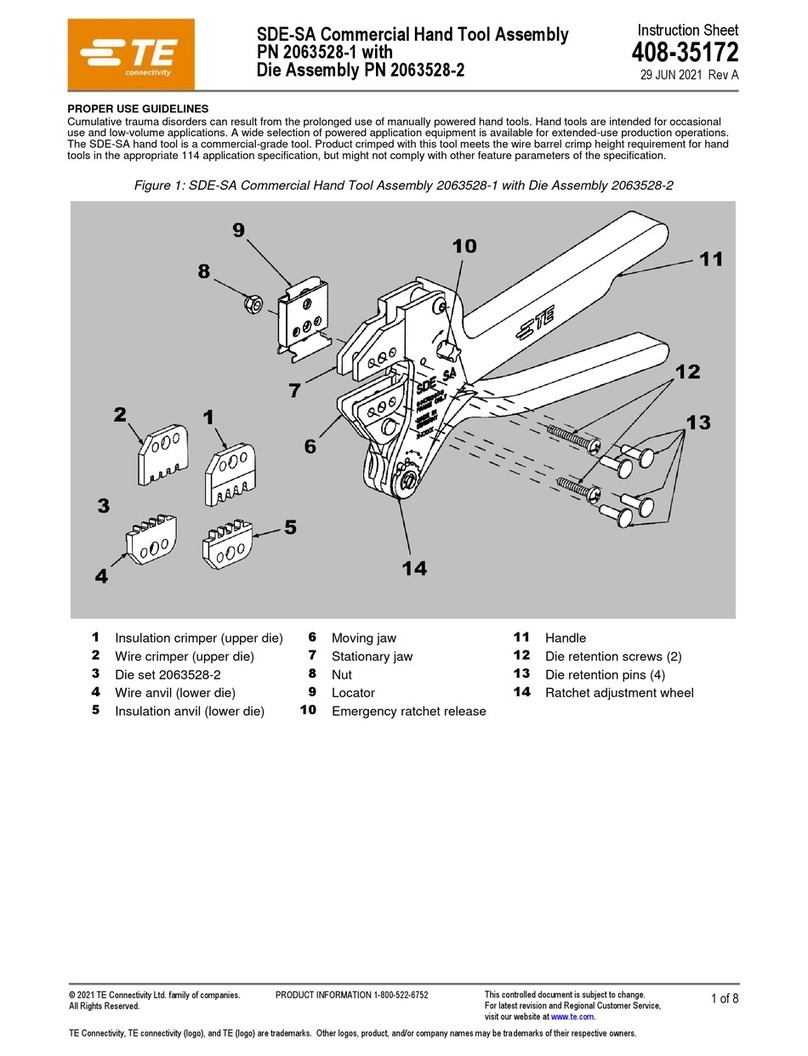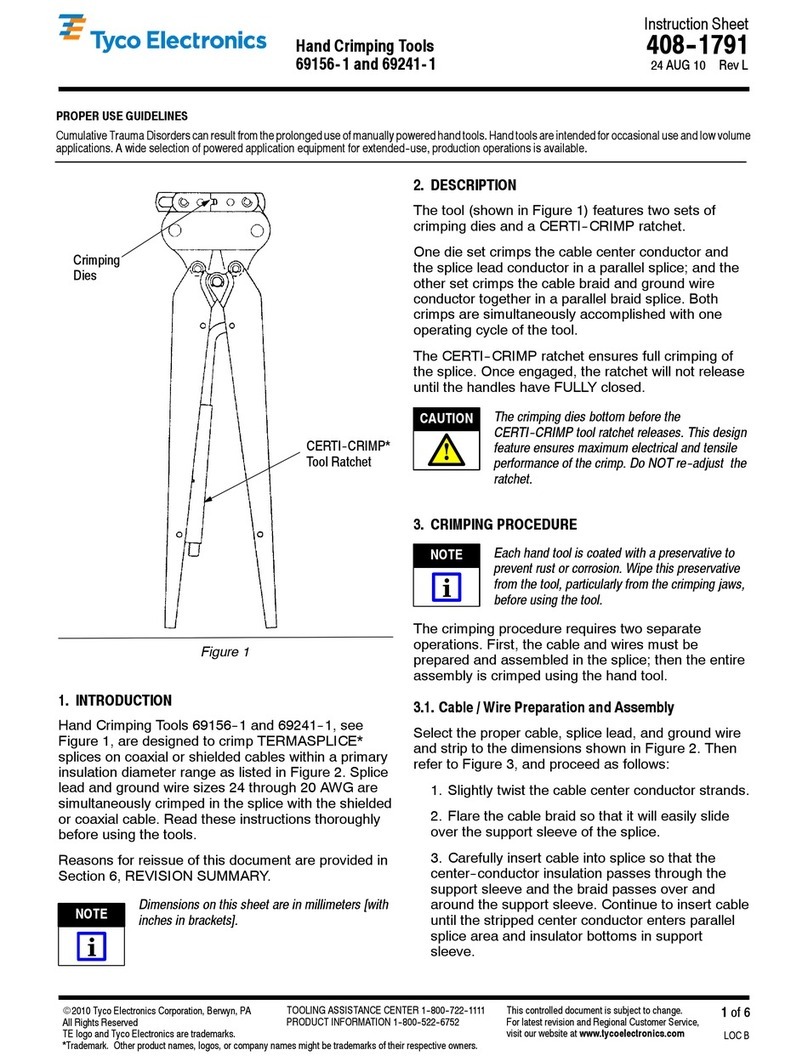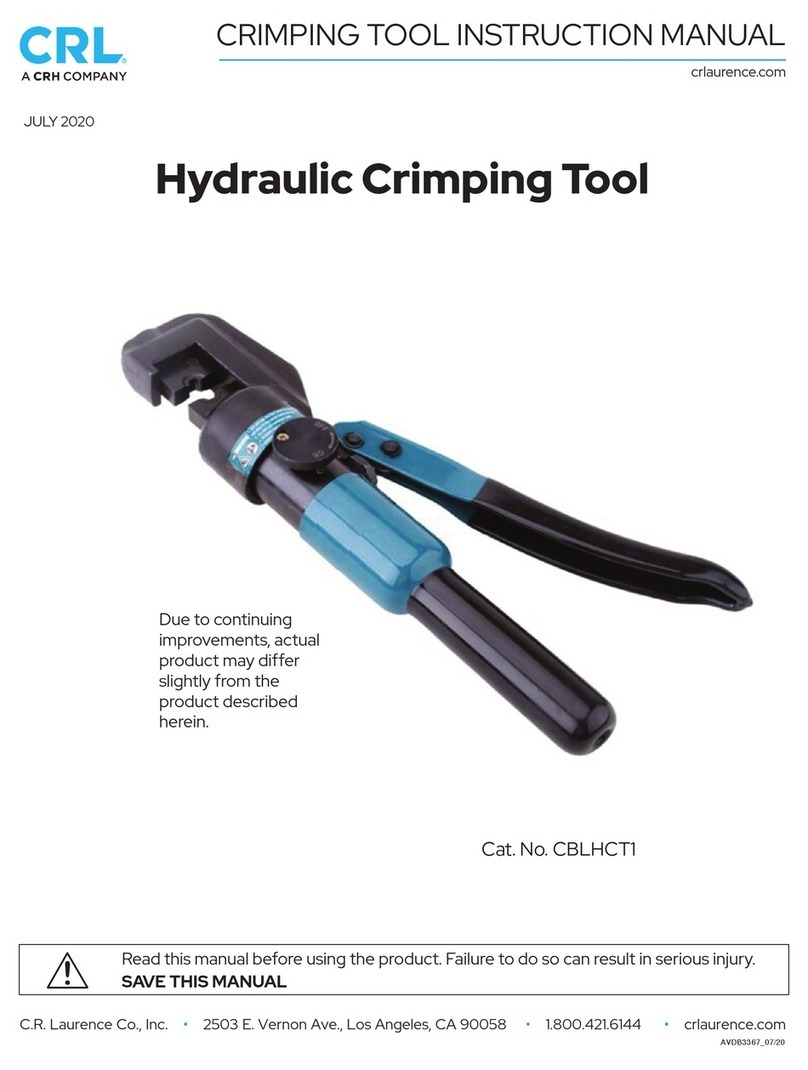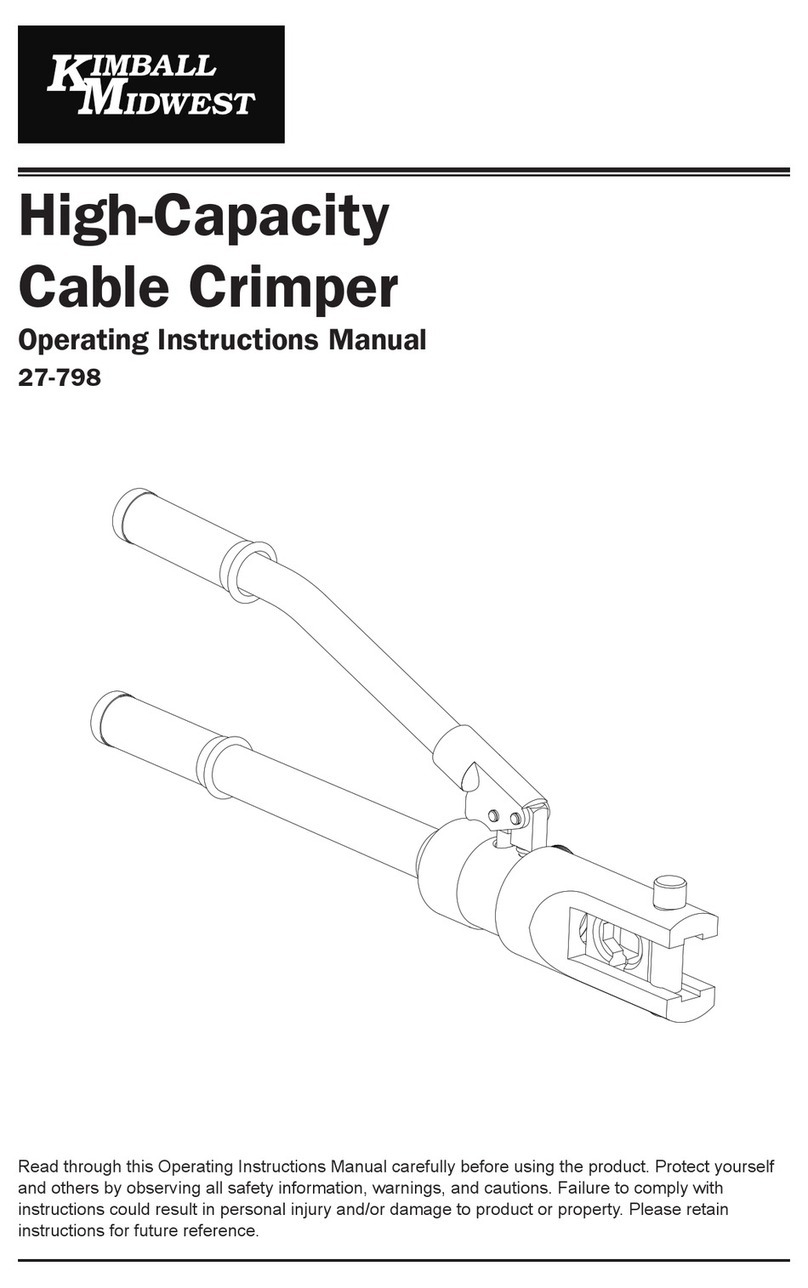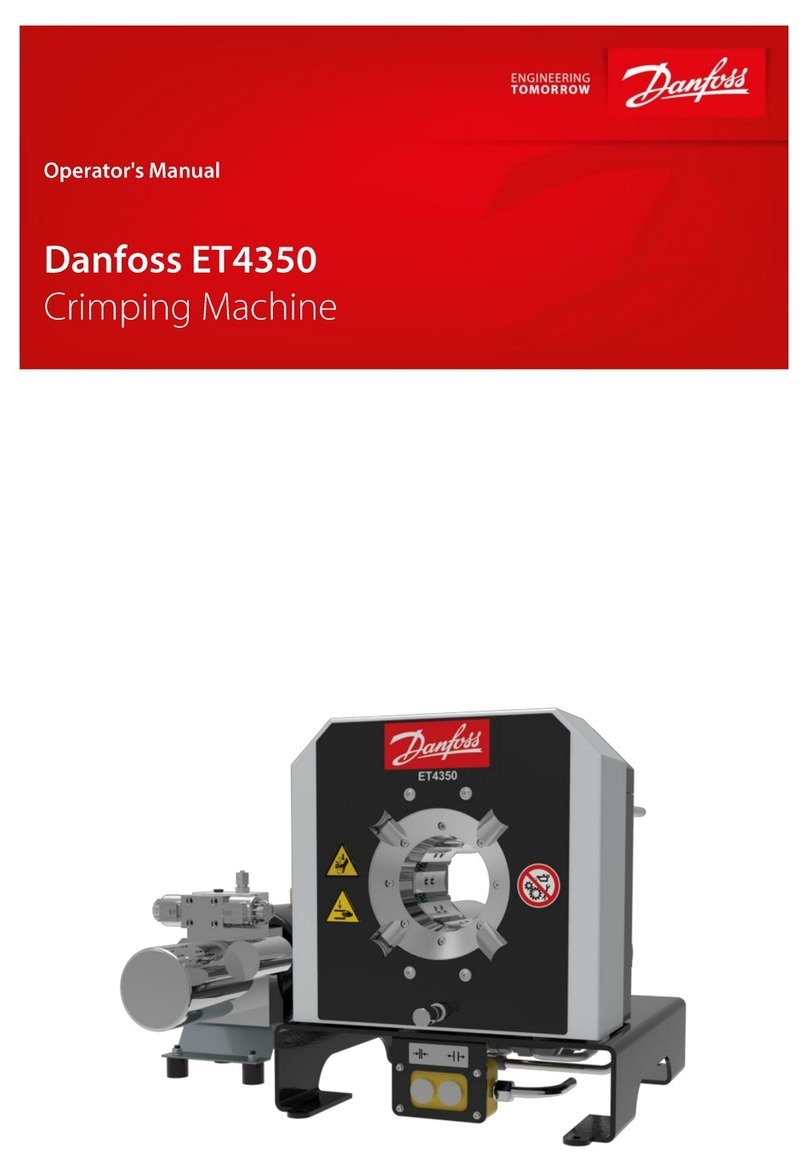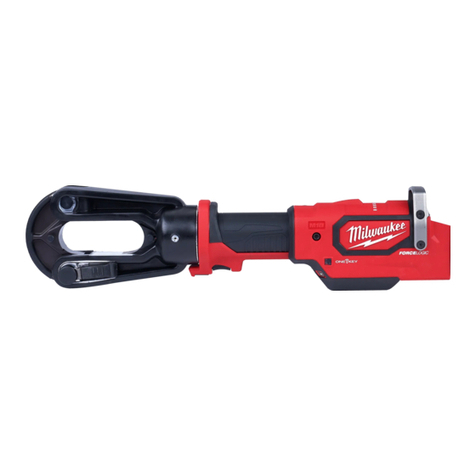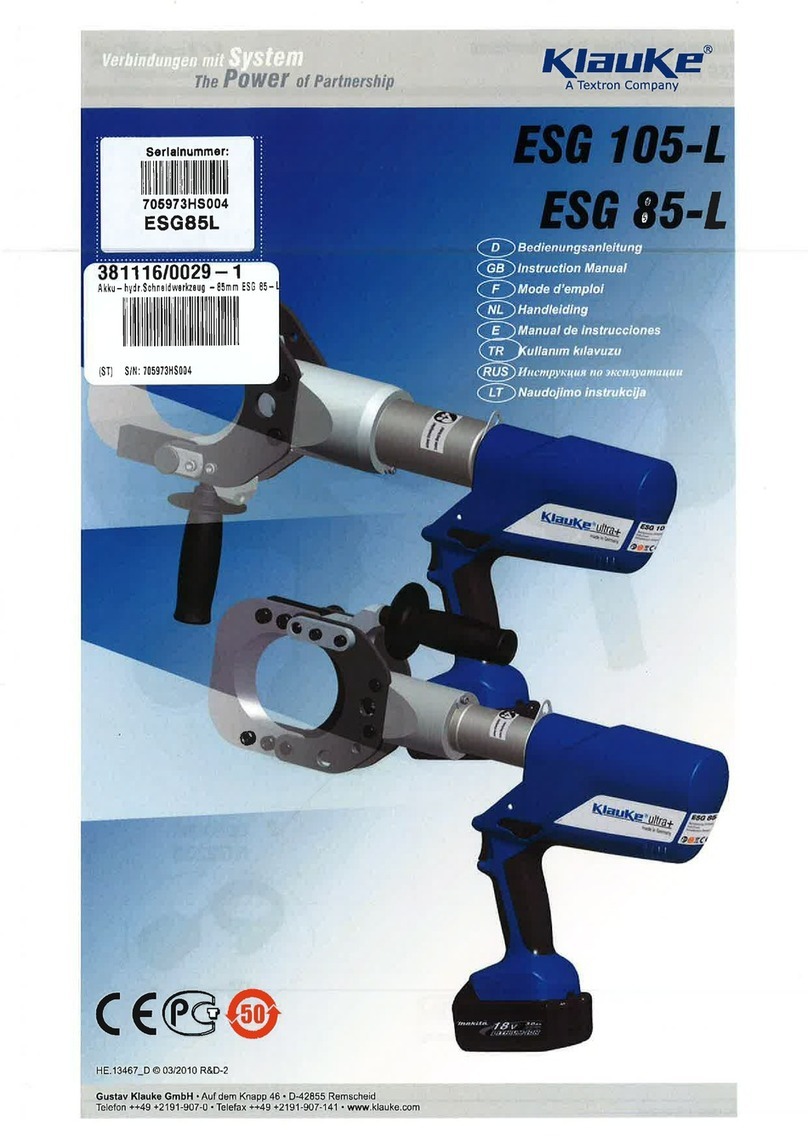
IMPORTANT: Only if the 45 Amp contact appears to
be aligned properly, and will curl inward, continue to
squeeze. If the contact is misaligned, use the release
lever to start over. DO NOT CONTINUE SQUEEZING.
If it is properly aligned, continue, but ONLY TO THE
POINT WHERE THE RATCHET RELEASES. Squeezing
past the release point may over crimp the contact or
damage the tool. The ratchet release point assures
that the crimp is fully compressed and makes the best
connection crimped to the proper dimensions.
PWRcrimp MAINTENANCE
For a long service life, the PWRcrimp, like any crimp tool,
requires periodic and proper lubrication.This should be done
every 50 or 100 crimps. Always make sure that all of the pivots
points are oiled with machine oil. Ensure that the lubricant ows
inside bearing surface of all pivot points. See the gure below.
The crimp dies come pre-lubricated. It is recommended
to periodically spray the dies with a light coating of silicon
lubricant or WD40 to allow the crimped contacts to be
removed easily and to make the dies last longer.
The tools are adjusted at the factory for a full strength
crimp. If you feel that the crimps are too tight or too loose,
you may check the crimp by measuring the height (smaller
dimension) of a nished crimp with a micrometer or
accurate vernier caliper.
Contact nished crimp measurements:
(the height of the crimped portion, smaller dimension)
45 amp contact with 10 gauge wire .100” to .120”
30 amp contact with 12 gauge wire .090” to 110”
15 amp contact with 16 gauge wire .080” to .100”
If the tool does not crimp within this range, try the following
adjustment procedure:
The tension and compression of any crimp tool tends to
lessen with use and wear. There is a toothed wheel held
in place by a silver colored Phillips head screw that adjusts
a tension pivot cam. The adjustment is not obvious as it is
impossible to see the position of the cam and adjustment
should not be attempted without an accurate way to
measure the nished crimps according to the table above.
The toothed cam wheel is set to minimum tension when
the at on the shaft is facing the pivot point directly next to
it. It is at maximum tension when the at is 180 degrees
opposite and away from the adjacent pivot point. Rotating
the toothed cam wheel in either direction between these
extremes will adjust the tension and crimping force. Note
that there are two locations for the set screw to allow for
ner adjustment.
5
PWRcrimp Warranty
The PWRcrimp is warranted against failure due
to defects in workmanship or materials for ninety
days after the date of purchase from West Mountain
Radio or an authorized dealer. If purchased from an
authorized dealer it must be returned with a copy of
the original sales receipt or proof of purchase.
Warranty does not cover damage caused by abuse,
accident, misuse, improper or abnormal usage, failure
to follow instructions. If failure occurs within this
period, return the PWRcrimp to West Mountain Radio
at your shipping expense with a full explanation and
necessary proof of purchase. The tool will be repaired
or replaced, at our option, without charge, and
returned to you at our shipping expense. Repaired
or replaced items are warranted for the remainder of
the original warranty period. You will be charged for
repair or replacement of the tool if returned after the
expiration of the warranty period.
West Mountain Radio shall have no liability or
responsibility to customer or any other person or
entity with respect to any liability, loss, or damage
caused directly or indirectly by use or performance
of the products or arising out of any breach of this
warranty, including, but not limited to, any damages
resulting from inconvenience, loss of time, data,
property, revenue, or prot, or any indirect, special
incidental, or consequential damages, even if West
Mountain Radio has been advised of such damages.
Except as provided herein, West Mountain Radio
makes no express warranties and any implied
warranties, including tness for a particular purpose,
are limited in duration to the stated duration provided
herein.
www.westmountainradio.com
1020 Spring City Drive, Waukesha, WI 53186
tel 262-522-6503 fax: 262-522-6504
NOTE: YOUR WARRANTY MAY BE VOIDED IF THE
TOOL IS DAMAGED DUE TO SETTING THE TENSION
TOO HIGHLY.
6
PREPARING TO CRIMP
Wire cutters are needed to cut the wire and wire strippers
should be used to strip the wire. Use of cutters to strip wire
might possibly nick the wire strands. With the strippers, strip
the wire insulation back 3/8 in., trying not to nick the strands.
PREPARING THE WIRE ASSEMBLY
Tip: If you are using heavy paired-wire, orient the paired
wire with the red/plus wire on your right with the stripped
end of the wire facing away. Install the contacts so the
hooked edge of the contact is down and they will install
in the housings correctly without twisting the wire into
alignment.
CRIMPING 15, AND 30 AMP CONTACTS
Carefully insert all of the strands of the wire into the
wire cup on the contact end. Fully open the PWRcrimp
jaw. With the hooked edge downward, place the contact
and wire fully into the plastic contact positioner for the
respective 15 or 30 amp die. Notice that the contact’s split
seam of the wire barrel is facing squarely up towards the
center of the upper die. Make sure that the wire is still fully
inserted into the contact and crimp down rmly. Continue
to squeeze through each ratchet index, only until the tool
opens. DO NOT SQUEEZE PAST THE POINT WHERE
THE RATCHET RELEASES, doing this may make a poor
or damaged crimp or damage the tool. The ratchet release
point assures that the crimp is fully compressed and
makes the best connection.
CRIMPING 45 AMP CONTACTS
For 45 Amp contacts, do not place the wire in the contact.
Fully open the PWRcrimp jaw and with the at tab
downward and the open end of the “U” upward, place the
contact fully into the 45 amp die and contact positioner
opening. Slightly close the tool, but only until both tabs
of the 45 Amp contact are just touching inside the upper
die. Be sure that both tabs are symmetrical inside the
upper die. One tab may want to spread outward instead
of inward, ruining the contact and possibly jamming or
damaging the tool. (Some Anderson 45 amp contacts
supplied are formed slightly wide, and the contact may not
t properly in the die.)
If the tabs are not inside the die when partially closing the
handles, use the release lever and take the contact out.
Slightly squeeze the contact tabs together with a pair of
pliers so they are more of a U shape than a V and start over.
With the contact properly aligned inside the slightly closed
tools die, neatly place all the strands of the wire fully in to U
shaped channel and crimp until the ratchet mechanism just
releases. This will take considerable force.
4
